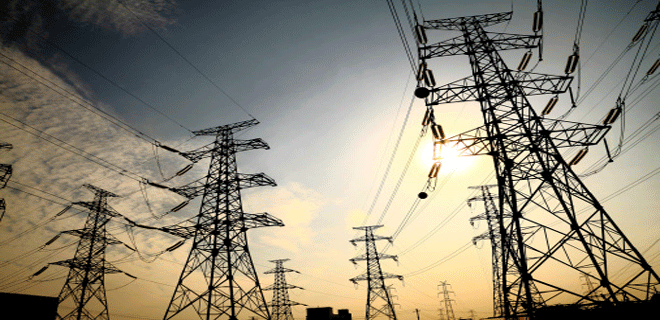The Powerpuff PGCIL
Power Grid Corporation of India’s healthy capex boosts growth reported by Edelweiss

Power Grid Corporation of India (PGCIL) is an Indian state-owned electric utilities company headquartered in Gurugram, India. PGCIL commenced operations in 1992 by consolidating transmission assets of National Thermal Power Corporation Limited (NTPC), National Hydroelectric Power Corporation (NHPC), North Eastern Electric Power Corporation Limited (NEEPCO), and Nuclear Power Corporation of India Limited (NPCIL), Tehri Hydro Development Corporation and Neyveli Lignite. POWERGRID is a listed company, with 57.90 per cent holding by Government of India and the balance by institutional investors and public.
In 1994, the assets and communication systems of regional load dispatch centre (RLDC) were also transferred to the company with an objective to enhance grid management. Due to the central transmission utility status, PGCIL is mandated to undertake and operate inter‐state transmission systems efficiently, provide for open access, and undertake various functions of RLDC. Recently, under the Rajiv Gandhi Grameen Vidyutikaran Yojana, PGCIL is mandated to implement the electrification of rural households in association with the Rural Electrification Corporation, SEBs, and the respective state governments. It is also playing a significant role in carrying forward the distribution reforms through undertaking Deendayal Upadhyaya Gram Jyoti Yojana (DDUGJY) and Integrated Power Development Scheme (IPDS) working on behalf of the Government of India.
Its vast transmission network wheels more than 45 per cent of the power in the country. The availability of this huge transmission network is consistently maintained over 99 per cent through deployment of state-of-the-art operation and maintenance techniques at par with global standards.
PGCIL has emerged as a strong player in South Asia and is playing an active role in formation of a strong South Asian Association for Regional Cooperation (SAARC) grid for effective utilisation of resources for mutual benefits. Presently, various electrical interconnections exist between India & Bhutan, India & Nepal and India & Bangladesh and these inter-connections are further being strengthened for substantial exchange of power across the borders. The corporation is also offering consultancy services to various National clients & International clients, including many South Asian, African, and Middle East countries.
As on June 30, 2017, Power Grid owns & operates around 1,40,723 ckm of Extra High Voltage (EHV) transmission lines spread over the length and breadth of the country.
For the quarter ended in June 2017, Power Grid Corporation of India witnessed operating performance in line with estimate with 17 per cent revenue growth.
Consultancy and telecom: Robust performance sustained
PGCIL’s consultancy business in terms of revenue surged 74 per cent versus previous sequential year and got 28 new orders where as the revenue of telecom business revenue jumped a healthy 28 per cent year on year and bagged 38 new orders, during the first quarter of 2018.
The management continues to be optimistic on the expanding telecom and consultancy businesses.
The core regulated income stood at Rs 1700 crore up 8 per cent on year on year (YoY) basis and the core regulated equity increased by 20 per cent YoY and stands at Rs 46,400 crore. This implied annualised return on equity (RoE) plummeted by 1.6 per cent to 14.7 per cent for first quarter of 2018.
Intact capital expenditure guidance
The management has continued to guide for healthy capex of Rs 25,000 crore in fiscal 2018. Guidance of Rs 81,000 crore capex over the next three and a half years implies annualised capital expenditure of Rs 25,000 crore for the next three to four years. The capex for fiscal 2018 and 2019 is also estimated at Rs 25,000 crore each, which translates into capitalisation ratio of 1.26 times and 1.3 times, respectively.
Nonetheless, first half of 2018 is normally slow with respect to capitalisation of assets; the company clocked 44 per cent growth in the same in first quarter of 2018. The robust capitalization stood at Rs 3,500 crore. PGCIL can sustain high capitalisation ratio at more than 1.25 times over the next two to three years driven by stepped‐up focus on commissioning.
Investment Premise for PGCIL
Growth visibility: The company has met its Eleventh Five Year capital expenditure (capex) Plan of Rs 55,000 crore for its various transmission projects. Of these close to 60 per cent are for strengthening the overall grid capacity and the balance 40 per cent is generation linked.
There is a certain growth visibility on the capex program and in turn earnings growth. The 12th Plan target for capex is touted to be Rs one hundred thousand crore. PGCIL has been consistently delivering 20 to 25 per cent profit growth every quarter driven by its capex.
Reversal in the current trend of capex and telecom earnings
The overall earnings growth will be significant given the company scales up its internal accruals through superior earnings from telecom which would be invested in power business.
Over the upcoming 2017-19, regulated equity will post 20 per cent plus CAGR even on a higher base; and unlike the generation segment, core RoE is not contingent on utilization or power demand growth in the system.
The strong capital expenditure visibility, reasonable capitalization ratio of 1.3 times and steady regulated RoE of 15.5 to 16.0 per cent make PGCIL a good cash proxy with steady returns. The key measurable is RoE that PGCIL can earn in the intensely competitive tariff-based competitive bidding (TBCB) projects. The increasing proportion of TBCB based biddings needs to be monitored closely.
Risks faced by Power Grid
Telecom scale up: There is delay in the scaling up of PGCIL’s transmission towers as its telecom towers. The company’s strategy of leveraging its transmission towers as telecom towers has not scaled up yet.
Funding issues: Under the norm of 70:30 proportion of debt:equity, Power Grid corporation is by its limited retained earnings in undertaking significant capital expenditure programme. Although the company could raise the threshold to 75 per cent debt and 25 per cent equity to meet its XII Plan target but the earnings will continue to be on the actual equity deployed.
Delay in capex; dependent on generation capacity growth
About 40 to 50 per cent of the total capital of Power Grids is heavily dependent on the capacity addition of its associated generation projects. Any delay in these generation assets will cascade to a delay in the corporation’s project execution slowing its pace of growth. In case, there are delays in escalation in project costs, delay in commissioning of generation projects, and long gestation periods could impact profitability, and will not be compensated through tariffs.









